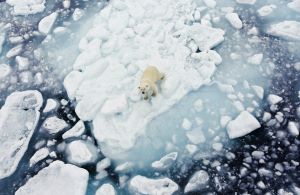Please activate JavaScript in your browser to use all interface options.
- About Rosneft
- Corporate governance
-
Business
Upstream
- General Information
- Licensing
- Geological Exploration
- Reserves and resources
- Production and Development
- Gas Business
- Offshore projects
- Offshore equipment
Downstream
- Petroleum refining
- Gas Processing
- Petrochemistry
- Catalyst plants
- Production of lubricants
- Sales of oil products
- Sales of Petrochemical products and LPG
- Gas Sales
- Gas Motor Fuel Sales
-
For Investors and Shareholders
- Corporate documents
- Financial statements, presentations, annual reports
- LSE RNS disclosure
- Investor calendar
- Rosneft: Contributing to Implementation of UN Sustainable Development Goals
- ESG
- Equity
- For Insiders
- Shareholder’s Personal Account
- General shareholders' meeting
- Dividends
- Questions and answers for shareholders
- Investor tools
- Contacts
- Beware of fraud!
- Sustainable Development
- News room
Rosneft Launches Expeditions to Study Polar Bear Population
21 April 2025
Rosneft has launched scientific expeditions to study polar bears in Dixon, Krasnoyarsk Territory, and Sabetta, Yamalo-Nenets Autonomous District. This will be the first time that a full-scale aerial survey of the distribution and numbers of the Kara subpopulation of this Arctic predator has been conducted. Specialists from the Severtsov Institute of Ecology and Evolution of the Russian Academy of Sciences, along with representatives from the Clean Seas Foundation, are taking part in fieldwork organised by the Company’s Arctic Science Centre.
The expeditions are being carried out as part of Rosneft’s biodiversity conservation programme called Tamura. The scientists are planning to survey the north-western coast of Taymyr and the islands in the Kara Sea. The work, which covers an area of several hundred thousand square kilometres, is being conducted from a laboratory aircraft and a helicopter. The expedition participants will assess the sex and age composition of the bears and their general condition using photo registration. Furthermore, the animals will be safely immobilised to take blood and hair samples for in vitro studies, including genetic analysis. In order to monitor the seasonal migration of polar bears, their activity and feeding grounds, a number of animals will be fitted with transmitters containing satellite radio tags.
The fieldwork will last approximately one month and will build upon research conducted in northern Krasnoyarsk in the summer of 2024.
For reference:
Rosneft and the Russian Ministry of Natural Resources are continuing their research work in the Arctic region as part of the National Ecology Project. The relevant agreement, which covers the period from 2024 to 2027, was signed at the 27th St. Petersburg International Economic Forum.
In 2024, the Company’s Arctic Research Centre organised five expeditions. During these, scientists studied populations of polar bears, wild reindeer, and rare bird species in western Taymyr. The total length of the air routes was almost 17,000 kilometres and the water routes more than 3,000 kilometres.
Department of Information and Advertising
Rosneft
April 21, 2025

-315xx70.png)

